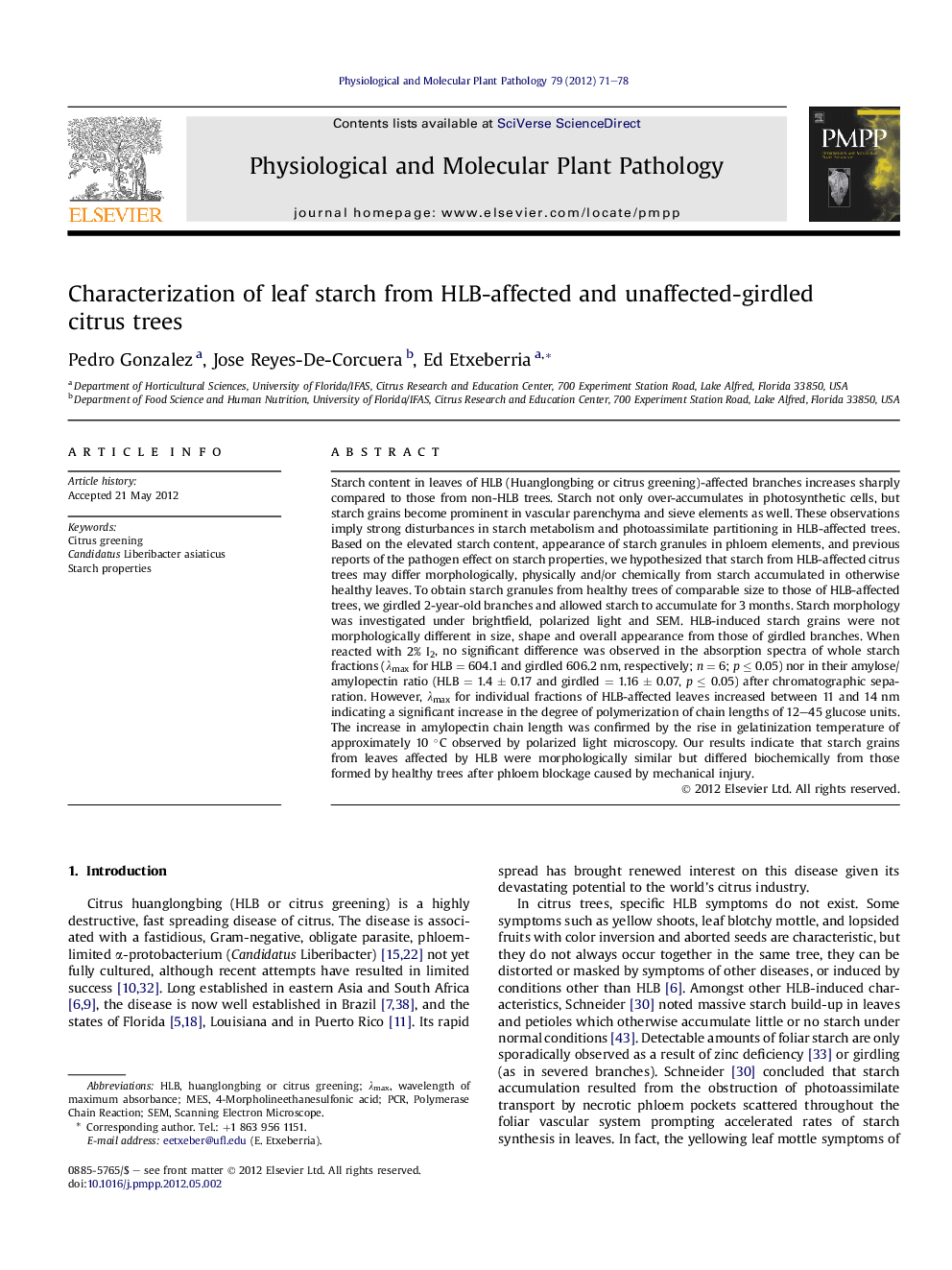| Article ID | Journal | Published Year | Pages | File Type |
|---|---|---|---|---|
| 2836449 | Physiological and Molecular Plant Pathology | 2012 | 8 Pages |
Starch content in leaves of HLB (Huanglongbing or citrus greening)-affected branches increases sharply compared to those from non-HLB trees. Starch not only over-accumulates in photosynthetic cells, but starch grains become prominent in vascular parenchyma and sieve elements as well. These observations imply strong disturbances in starch metabolism and photoassimilate partitioning in HLB-affected trees. Based on the elevated starch content, appearance of starch granules in phloem elements, and previous reports of the pathogen effect on starch properties, we hypothesized that starch from HLB-affected citrus trees may differ morphologically, physically and/or chemically from starch accumulated in otherwise healthy leaves. To obtain starch granules from healthy trees of comparable size to those of HLB-affected trees, we girdled 2-year-old branches and allowed starch to accumulate for 3 months. Starch morphology was investigated under brightfield, polarized light and SEM. HLB-induced starch grains were not morphologically different in size, shape and overall appearance from those of girdled branches. When reacted with 2% I2, no significant difference was observed in the absorption spectra of whole starch fractions (λmax for HLB = 604.1 and girdled 606.2 nm, respectively; n = 6; p ≤ 0.05) nor in their amylose/amylopectin ratio (HLB = 1.4 ± 0.17 and girdled = 1.16 ± 0.07, p ≤ 0.05) after chromatographic separation. However, λmax for individual fractions of HLB-affected leaves increased between 11 and 14 nm indicating a significant increase in the degree of polymerization of chain lengths of 12–45 glucose units. The increase in amylopectin chain length was confirmed by the rise in gelatinization temperature of approximately 10 °C observed by polarized light microscopy. Our results indicate that starch grains from leaves affected by HLB were morphologically similar but differed biochemically from those formed by healthy trees after phloem blockage caused by mechanical injury.
► Determined changes in starch properties between healthy and greening citrus trees. ► Study found significant increase in the starch glucan lengths in HLB-affected trees. ► Increase in amylopectin length confirmed by the rise in gelatinization temperature.
